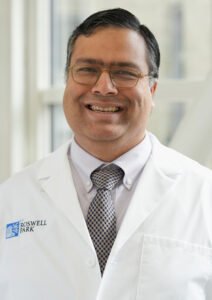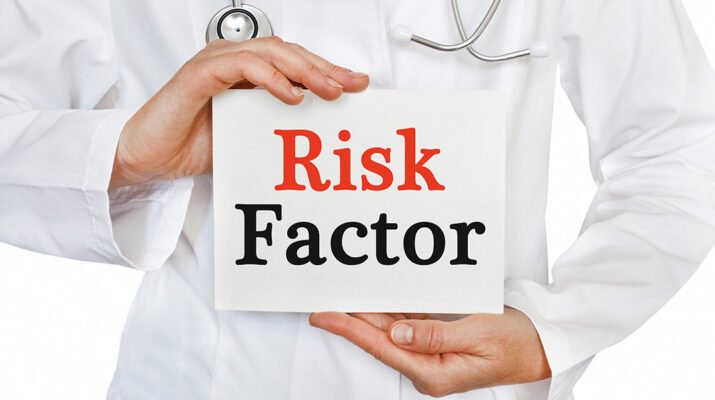How can you mitigate your risk?
By Deborah Jeanne Sergeant

The Centers for Disease Control and Prevention estimates that 2% to 8% of all cancers worldwide are caused by exposures to carcinogens — those substances identified as causing cancer — on the job.
“There are certain careers such as construction-related jobs, military and other industrial jobs that expose people to substances known to increase cancer risk, especially with long exposure,” said Najam Ud Din, medical oncologist with St. Joseph’s Health. “Examples of such chemicals are asbestos, silica, diesel exhaust, poorly aromatic hydrocarbons, solvents and wood dust. Other chemicals such as benzene and solvents, formaldehyde, vinyl chloride, etc., are also hazardous.”
Careers that involve painting, agriculture, forestry, fishing, manufacturing, mining, petrol refineries, transportation and distribution also place workers at risk because of the chemicals they involve. However, other jobs one may not suspect also raise cancer risk, such as working as a flight attendant or pilot, office worker, night shift employee or firefighter. For flight attendants and pilots, spending so much time exposed to UV radiation in the not-so-friendly skies can ramp up risk.
Office workers’ inactivity can mean reduced overall health. A sedentary lifestyle has been strongly correlated in recent years with increased cancer risk. Unfortunately, an occasional workout isn’t enough to combat this risk.
Working the night shift disrupts the body’s circadian rhythm and can cause systemic changes that make the body more susceptible to developing cancer.
Firefighters often inhale toxic fumes when manmade objects burn.
Of course, anyone working in these types of careers should use personal protective equipment. Employers are required by law to provide PPE. In addition, workers can use other means to reduce their risk for cancer.
“Employers, workers and health professionals should team up to identify hazards, monitor exposure and fix problems early,” Din said. “These steps do not just protect today’s workers; they reduce cancer risk for the long-term.”
Supporting overall good health can help mitigate the exposure to possible cancer-causing effects from higher risk employment. Diet makes a difference.

Tess Michaels, a public health and public health educator with Cancer Services Program of Onondaga County, advises eating healthfully.
“Limit red or processed meat,” Michaels said. “It’s huge in preventing colorectal. Eat enough fruits and vegetables, at least seven servings of vegetables a day. It can reduce cancer risk by 33%.”
She added that cruciferous vegetables like kale, broccoli, Brussels sprouts and cabbage are particularly beneficial.
Focusing on whole foods, produce, lean sources of protein and whole grains can bolster overall health.
She also said that physical exercise, a minimum of 30 minutes to an hour a day, can help reduce risk.
“It can be going for a walk, not even high impact exercise,” Michaels said. “Or take 10 minutes every couple hours to exercise each day. It can have a huge impact.”
Exercise represents a great way to manage stress and promote restorative rest. Sleep six to nine hours nightly, going to bed and rising at the same time every day. This can help set the circadian rhythm and stabilize hormones.
Maintain a healthy weight and keep health numbers in check such as blood pressure and cholesterol. Take any prescribed medication and follow doctor’s instructions for keeping chronic health issues in check.
Mitigating stress can also help reduce risk, as stress raises cortisol levels and inflammation. Michaels said that managing stress with exercise and engaging in enjoyable activities can help.
Along with doing good things for the body, Michaels said it’s vital to avoid some things, such as tobacco, which can raise risk of many types of cancer, not just lung cancer.
“Drinking alcohol puts you at much higher risk for colorectal and other kinds of cancer,” Michaels added. “Obviously, it’s hard to tell people to cut this out of their life. If you do drink, have one to two glasses maybe once a week. Don’t start drinking if you don’t.”
In addition, she encourages people to check with their primary care provider about when they need to start receiving cancer screenings based upon their personal and family health history and their inherent risk.
Anyone who notices a change in their bodies such as a persistent cough or fever; unexplained weight loss, fatigue or pain; growing moles or lesions or lumps, should contact their primary care provider. While these are all general symptoms that could be attributed to many other causes, they may indicate cancer and that should be ruled out.

